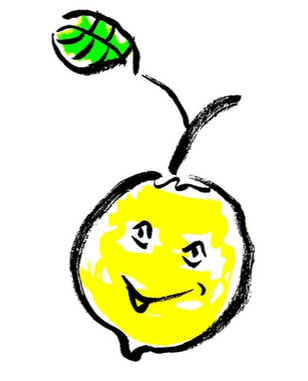 The more you salivate, the higher the acid level of the wine. The more you salivate, the higher the acid level of the wine. If you are handed a plate of sea bass that was pulled off the grill on a summer day, do you grace it with a splash or two of lemon juice? Refreshing, crisp acidity is a burst of excitement in your food and wine. Without acidity, wine would taste flabby and lifeless, as might that lovely sea bass. Acid contributes the tart, zippy, and/or sour flavors you experience in wine. The level can range from low to high, depending on the grape variety, growing conditions, climate, winemaking, and a host of other factors. Acid also performs a useful function: it inhibits the growth of bacteria and unsavory microbes. In other words, it acts as a preservative. If you enjoy the classic Italian dish, beef carpaccio, you understand the role of lemon juice or balsamic vinaigrette, aka acids, to protect the raw steak from bacteria and brighten up the flavor. Low-acid wines taste fuller in the mouth, giving you a soft, round, mellow experience. Wines with high acidity deliver a leaner, more bracing adventure, like taking a vigorous run in cool weather. Wines with high acidity can help improve the wine as it ages, while those with low acidity can cause the wine to lose vibrancy. That is why collectors look for medium to high acidity in the wines they plan to age (along with substantial tannins, alcohol, fruit concentration, and possibly sweetness). A low-acid wine has less protection from contamination so it is customarily drunk young. Sometimes low acid wines, with their sensitivity to oxidation, develop a hazy appearance, though this can be avoided by the winemaker with the addition of sulfur dioxide and/or filtering. Don’t restrict yourself to either low-acid or high-acid grape varieties; try them all. Many times I have made the mistake of thinking a wine did not have the right resumé only to be surprised and thrilled by the wine’s magnificence. In fact, I made the same mistake when a man who was a few years younger than me (wrong resumé) working at the same firm (double wrong resumé) dropped by my office to “chat” some years ago. That man later turned out to be my husband, Peter.  Wines with a low pH have high acidity while wines with a high pH have low acidity. Wines with a low pH have high acidity while wines with a high pH have low acidity. I am also guilty, in the past, of being reluctant to try a bottle of wine made from a low-acid grape varietal. I am a fan of medium- to high-acid wines, so how could wine made from a low-acid grape be a thrill? Once again, what actually happened differed from what I had expected. I often drink a Fino or Manzanilla Sherry as I prepare dinner. These are among the driest, least acidic wines in the world and they are made from the Palomino Fino grape. Sherry is an acquired taste, and over time, my love affair with Sherry has waxed to the point of full-on passion. (Peter knows this and is fine with it.) My experience with Sherry has turned me into an enthusiastic believer in wines made from low-acid grapes. Conversely, I have been sorely disappointed by wines with a resumé that should have led to an absolute knockout experience. Like some men I dated before meeting Peter. Some truly delicious wines, such as Sémillon, Grenache and Ruchè, are low-acid varieties. When working with low-acid grapes, the vintner can use varying techniques, such as picking the grapes early before the acidity drops too low or blending with high-acid grapes, to keep the wine fresh and satisfying. An example of this type of blending: the great white Bordeaux whites, where the high-acid Sauvignon Blanc is blended with the low-acid Sémillon to create world-class wines of bright acidity and depth of flavor. The high-acid Carignan grape is a perfect blending partner to Grenache which is a low-acid grape. We have a lot of preconceived notions about the wines we will or will not drink, and that’s why it is important to keep an open mind. This week I was in the mood to drink something Spanish, so I sampled a 2018 bottle of Rueda over the course of five days. (Yes, it was one bottle revisited in small amounts over the course of a workweek.) Rueda is Castilla y León’s oldest demarcated wine region, producing almost exclusively white wines composed of their star, the Verdejo grape, which is a crisp variety. Makers often include Sauvignon Blanc or Viura when it is a blend. This bottle’s list of attributes gave me no doubt that I would enjoy a rewarding experience. It was the flagship wine of the maker. The wine was produced from one-hundred percent Verdejo grown on “un-grafted, pre-Phylloxera vines that are over one-hundred years old.” The label waxed on about citrus flavors, a viscous mouthfeel and a mid-palate that is “full-bodied with racy acidity” as well as a “lingering finish.” I opened the bottle and found the wine to be a mere shadow of what I was expecting, not only due to the optimistic write-up but because I have enjoyed many remarkable Ruedas in the past. Right resumé, disappointing wine. Tartrate crystals or "wine diamonds" are not made of glass and do not affect the aroma, taste or quality of your wine. Rueda, incidentally, is Spain’s largest producer of white wine. There are many brisk and delicious bottles coming out of Rueda, with lemon, lime, peach and bayleaf characteristics at prices that don’t make you think twice. I was mollified to find that this particular wine woke up a bit in terms of flavor on the fifth day, and I was glad I had not added the bottle to my collection of cooking wines on the kitchen counter. When I move a bottle to the kitchen counter, it is the equivalent of subjecting the bottle to wearing a dunce cap while facing the wall. These are bottles that did not make the cut. A wine’s acidity starts in the vineyard and is affected by soil, climate, canopy management, and other factors. At the beginning of the growing cycle, unripe grapes are naturally acidic. This is mother nature’s way of making the berries unappealing to birds and mammals who may want to eat them. As the grapes ripen and their sugar content rises, their acidity level goes down. Mother nature is now ready to attract animals to the seeds; she counts on them to eat and then scatter the seeds for the proliferation of the species. Climate also influences the acidity of grapes. If you drink a wine with high acidity, it may have been grown in a cool climate or a region with cool nighttime temperatures. Grapes from cool climates tend to retain their acidity much better than those grown in warm climates. However, some grape varieties are naturally acidic no matter where they are planted, such as Chenin Blanc and Sauvignon Blanc. The strength or intensity of acidity in wine is measured on a pH scale. Wines with a low pH generally present with high acidity while wines with a high pH have low acidity. But you do not need a pH meter to determine if a wine has low, medium, or high acidity. Your mouth reacts instinctively to the acidity of a wine through salivation, which restores your natural acid balance. The more you salivate, the higher the acid level of the wine. This is your personal measure for what is known as total acidity or titratable acidity. When you initially sniff a wine, you may anticipate high acidity if you detect tart or under-ripe fruit. On the red wine side, you may be able to pick up some clues as to the level of acidity before taking a sip based on color. Red wines with high acidity tend to be a bright ruby color. Those that are on the low end of the acid scale can have a purple or blue hue. Low-acid wines may turn brownish because they are more sensitive to oxidation.  Refreshing, crisp acidity is a burst of excitement in your food and wine. Refreshing, crisp acidity is a burst of excitement in your food and wine. Producers of whites that are too acidic can use malolactic fermentation (MLF) to tone down the crispness. MLF converts harsh malic acid, the type you might recognize in green apples, to the more soft, silky lactic acids you get from the milk you drink. Almost all reds go through MLF, and this process helps stabilize the wines. You will not detect MLF’s dairy aromas in reds. Makers of whites can prevent or induce MLF, based on the style they wish to produce. In colder growing regions, winemakers count on MLF to help them soften the wines that are overly acidic due to under-ripening. In warm regions, winemakers fight low acidity caused by sunlight and warmth, so they might block MLF in an effort to retain as much acidity as possible. Some winemakers balance out high acidity in a wine by blending in a sweeter wine . Or, a high-acid wine’s fermentation can be halted to produce a sweet wine that will nicely balance the wine. This is an approach you will see in sweet German Rieslings, for example, no blending required. Foods that have sweetness, saltiness or fat often make good pairings with high-acid wines. On the other hand, if a wine’s level of acidity is low, the winemaker can add tartaric acid to the grape juice prior to or during fermentation. Tartaric acid is a natural component of grapes, so adding it to the grape must is generally accepted as one method of making up for low acidity. It is usually added in powdered form and derived from grapes. If tartaric acid is added after fermentation, it is usually to cover up a mistake made in the cellar. Tartaric is the most important type of acid found in wine, providing balance and aging potential. Sometimes tartaric acid, when chilled, forms a compound that is responsible for the small crystals that you may happen to notice when you open a bottle of wine. The crystals are known as tartrate crystals or "wine diamonds" and they are harmless. Tartrate crystals are not made of glass and do not affect the aroma, taste or quality of your wine, but they will never go away unless you filter them out with a muslin cloth or at least mitigate the situation by decanting your wine. Personally, I am not bothered by tartrate crystals but it is nice to understand what they are so you can set the record straight with friends who express concerns about them. Have fun comparing a crisp white to a low-acid white and do the same for reds. Or, conduct a blind tasting of crisp and low-acid wines with friends and offer prizes to those who can identify what differentiates the wines. Cheers! Crisp/Acidic Varieties Whites: Albana Albariño Aligoté Madeleine Angevine Assyrtiko Bourboulenc Carricante Chasselas Chenin Blanc Colombard Cortese Cserszegi Füszeres Dafni Dry Hungarian Furmint Falanghina Friulano Godello Graševina Greco Gros Manseng Grüner Veltliner La Crescent Loureiro Moschofilero Melon de Bourgogne (Muscadet) Petite Arvine Petit Manseng (Jurançon, Pacherenc) Picpoul de Pinet Prié Blanc Poulsard/Ploussard Riesling Robola Sauvignon Blanc Savagnin Silvaner/Sylvaner St. Laurent Timorasso Torrontés Trebbiano Spoletino Verdejo Verdicchio Vidal Xarel-lo Reds: Aglianico Baga Barbera Blaufränkisch/Lemberger Bobal/Bovale Bonarda/Douce Noir/Charbono Carignan/Cariñena/Mazuelo Chambourcin Corvina Counoise Freisa Frappato Fumin Gamay Graciano Lagrein Mondeuse Noire Nebbiolo Petite Sirah Plavina Refosco (Colli Orientali) Sangiovese Zweigelt Low Acid Varieties Whites: Bacchus Catarratto Coda di Volpe Gewürztraminer Marsanne Malvasia Bianca Müller-Thurgau Muscat Blanc/Moscato Palomino Fino/Listán Blanco Pinot Blanc Sémillon/Semillon Reds: Dolcetto Garnacha/Grenache Montepulciano Négrette Pinotage Ruchè Tempranillo This is one in a series of Grape Detective blogs featuring the attributes of wine and how your love for a specific wine grape may lead you to discover new grapes with similar characteristics. The focus of the list is grape variety and does not include blends, wine regions, or styles.
0 Comments
Leave a Reply. |
AuthorLyne Noella Archives
October 2022
Categories
All
|


 RSS Feed
RSS Feed
